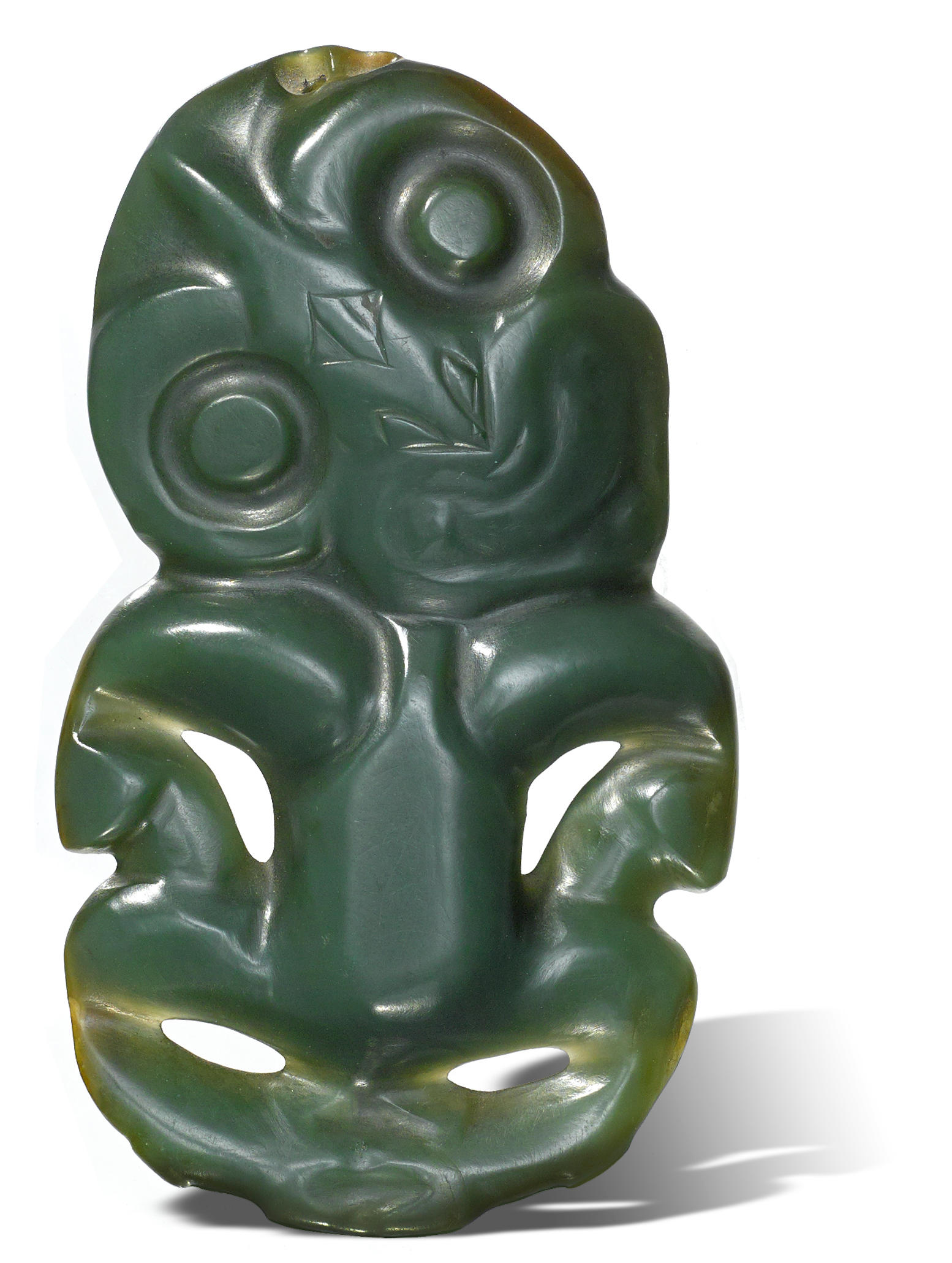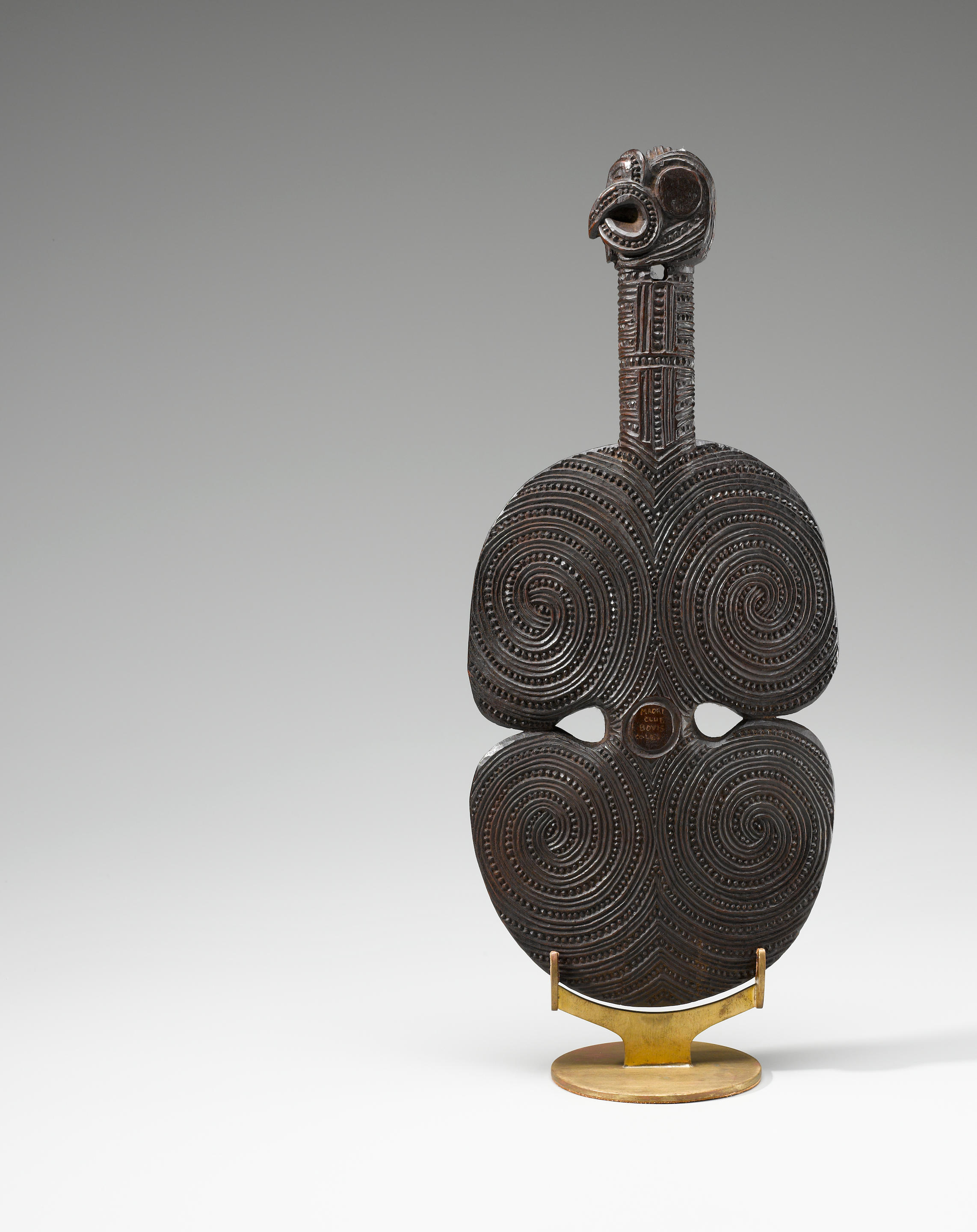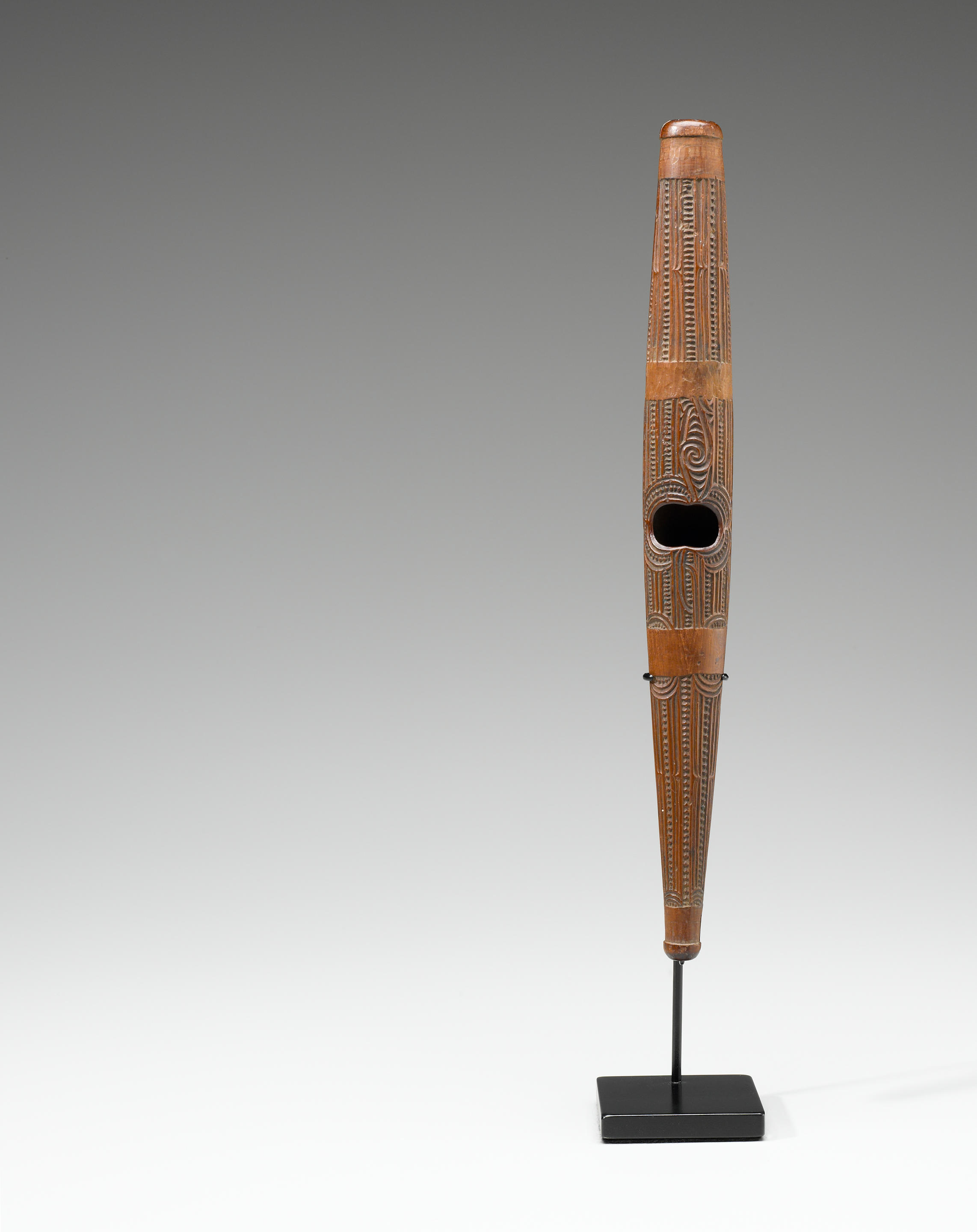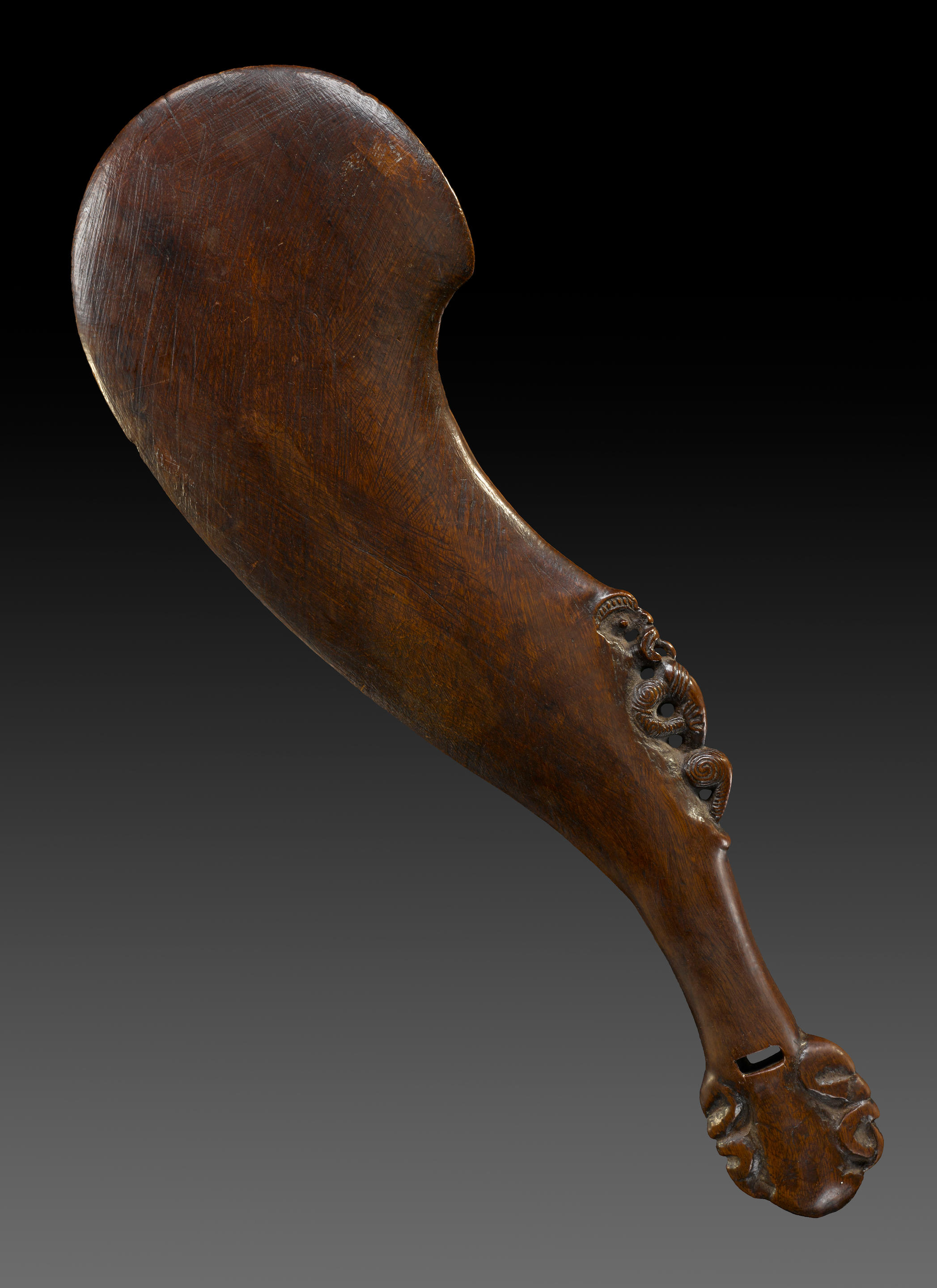kotiate
Whalebone (Physeter catodon)
Length 15 1/8in (38.2cm)
Provenance
James Malone Collection, Honolulu, Hawai'i, acquired by the 1960s
Terrance Barrow, Honolulu, Hawaii
Mark and Carolyn Blackburn Collection, Honolulu, Hawai'i, acquired from the above in 1992
'Although the shape of the wahaika (which literally means "mouth of the fish") was quite distinctive when compared with other forms of patu [hand club], this was perhaps the least uniform of all patu and clubs, with many small variations in design. Wahaika were made of both whalebone and wood. As may be expected, a larger proportion of the wooden wahaika have surface carving on the blade when compared to those fashioned from bone. A further variation can be seen in a number of very thin, curved wahaika that were fashioned from the crown of the sperm whale's skull.
The most striking features of the wahaika were the concave back and the peculiar notch that is carved into the edge of many surviving examples. A number of wahaika were also carved on the reke, or butt, and significant numbers also had small human or manaia figures carved above the handle.
Like other weapons, the wahaika was not only used in battle, but also in ceremony and speech making, where it was used by rangatira to accentuate the delivery of specific points.' (Evans, Jeff, Maori Weapons in Pre-European New Zealand, Libro International, Auckland, 2002, p. 38)
Cf. Starzecka, Dorata, Roger Neich, Mick Pendergrast, The Maori Collections of the British Museum, The British Museum Press, 2010, figs. 811-18 for six examples carved from whalebone.
Finely carved, most likely from the large jaw bone and without the use of metal tools, this present work has a recess at one edge of the blade and inner curve at the other, a carved tiki figure arches back with three fingers on each hand resting on his stomach, pierced through behind neck, arms, back and legs; a manaia head in profile with large pierced eyes at the butt; pierced through above the head for suspension cord.
kotiate
Whalebone (Physeter catodon)
Length 15 1/8in (38.2cm)
Provenance
James Malone Collection, Honolulu, Hawai'i, acquired by the 1960s
Terrance Barrow, Honolulu, Hawaii
Mark and Carolyn Blackburn Collection, Honolulu, Hawai'i, acquired from the above in 1992
'Although the shape of the wahaika (which literally means "mouth of the fish") was quite distinctive when compared with other forms of patu [hand club], this was perhaps the least uniform of all patu and clubs, with many small variations in design. Wahaika were made of both whalebone and wood. As may be expected, a larger proportion of the wooden wahaika have surface carving on the blade when compared to those fashioned from bone. A further variation can be seen in a number of very thin, curved wahaika that were fashioned from the crown of the sperm whale's skull.
The most striking features of the wahaika were the concave back and the peculiar notch that is carved into the edge of many surviving examples. A number of wahaika were also carved on the reke, or butt, and significant numbers also had small human or manaia figures carved above the handle.
Like other weapons, the wahaika was not only used in battle, but also in ceremony and speech making, where it was used by rangatira to accentuate the delivery of specific points.' (Evans, Jeff, Maori Weapons in Pre-European New Zealand, Libro International, Auckland, 2002, p. 38)
Cf. Starzecka, Dorata, Roger Neich, Mick Pendergrast, The Maori Collections of the British Museum, The British Museum Press, 2010, figs. 811-18 for six examples carved from whalebone.
Finely carved, most likely from the large jaw bone and without the use of metal tools, this present work has a recess at one edge of the blade and inner curve at the other, a carved tiki figure arches back with three fingers on each hand resting on his stomach, pierced through behind neck, arms, back and legs; a manaia head in profile with large pierced eyes at the butt; pierced through above the head for suspension cord.















Testen Sie LotSearch und seine Premium-Features 7 Tage - ohne Kosten!
Lassen Sie sich automatisch über neue Objekte in kommenden Auktionen benachrichtigen.
Suchauftrag anlegen